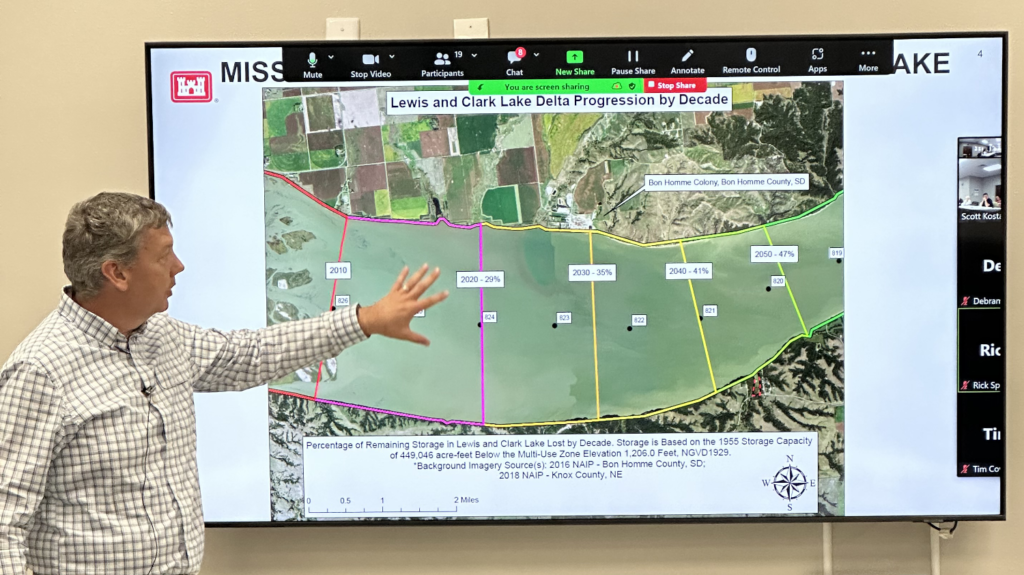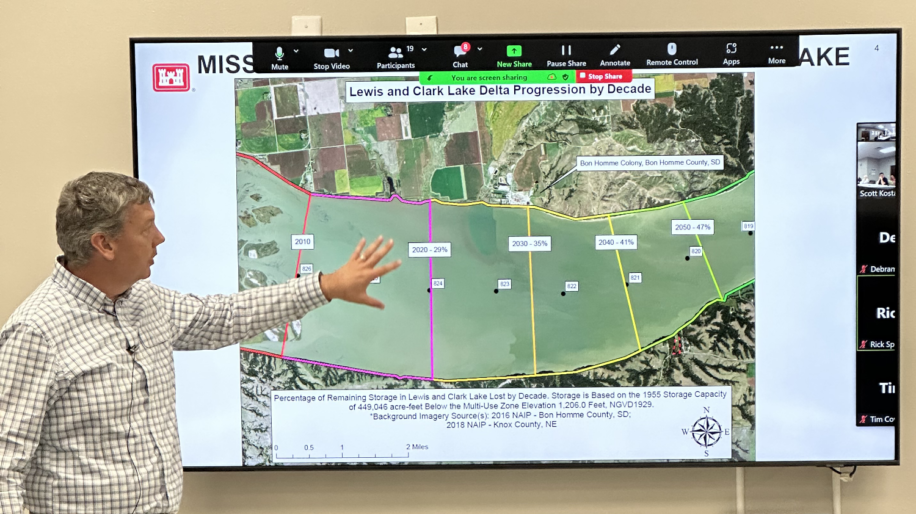
At MSAC’s 22nd annual meeting held in Yankton on May 19, 2023, Paul Boyd, hydraulic engineer – River and Reservoir Engineering Section of the US Army Corps of Engineers (USACE) – Omaha District, provided an update on Phase 2 and next steps. Joining Boyd, was Justin Brewer, Chief, Economics and Planning Quality Review USACE – Omaha District. Phase 2 is part of the effort by MSAC, stakeholders and the USACE to develop a sediment management plan for the Lewis and Clark Lake region. Phase 2 includes a detailed economic inventory of benefits and a review of possible sediment management actions that could produce positive sustainability benefits.
Some meeting focal points:
- Attendees questioned aspects the economics research and information presented. Recreation and dam decommissioning estimates, and costs of impacts downstream were three areas discussed. Corps staff and attendees examined ways to approach the economics as the Phase 2 final draft comes together.
- Corps staff provided key points of the Colorado School of Mines engineering student capstone project which looked at an initial conceptual analysis of what an active project would entail on Lewis and Clark Lake using Guardians of the Reservoir finalists’ technology. The student team proposed a single D-Sediment remote autonomous dredge and transport of sediment downstream to Missouri River.
- Discussion about Phase 3.
BACKGROUND: Shortly after Gavins Point Dam was completed in 1957 near Yankton, SD, people at the upper end of the lake and upstream began to feel the impacts of accumulating sediment. Currently, the lake is at least 30 percent full of sediment and by the year 2045 it is projected to be 50 percent full of sediment. In 2018, MSAC requested technical assistance from the USACE to develop a sediment management plan for the Lewis and Clark Lake region. The project is jointly funded by the USACE and the local sponsor, MSAC. To date, 14 stakeholders along with MSAC and its members have contributed funds to the local effort. MSAC anticipates lessons learned in this process will help the other Missouri River reservoirs in future planning.
Additional business for MSAC’s annual meeting included a Board of Directors member election. MSAC’s Board of Director members with terms expiring were re-elected: Mark Simpson, at large, and Paul Lepisto, at large, and Mary Hurd, at large.

